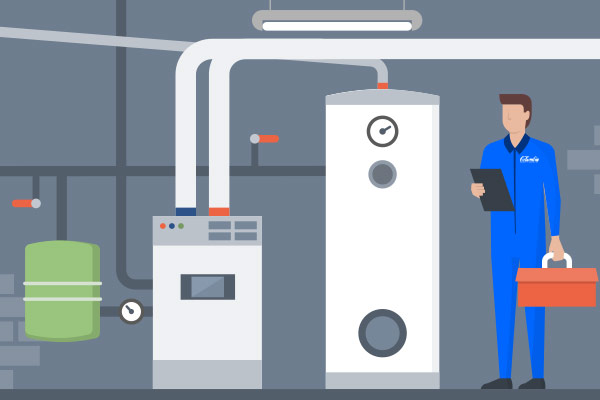Gas Furnace Buying Guide
Brrrrr! As temperatures drop, heating your home becomes a priority. But if your furnace is struggling to keep you toasty, it may be time to switch-up your central heating system. With a new furnace, you’ll not only heat your home more efficiently, you’ll also potentially rack up significant savings—around $40 for every $100 spent on fuel.
What is a Gas Furnace?
When choosing a new furnace, it’s important to understand your investment. Basically, a furnace is a metal box with a powerful fire inside. The fire produces both heat and exhaust fumes. A heat exchanger separates hot air from exhaust, and fans send that delicious warm air into your ductwork, heating your home. A high-efficiency furnace produces more “useable” heat. For example, a furnace with 90% efficiency only wastes 10% heat.
AFUE
The “annual fuel-utilization-efficiency” or AFUE ratings are used to measure furnace efficiency. Furnaces with high AFUE ratings wring more heat from each therm of energy. New furnaces must have AFUE ratings of at least 78%, while the most efficient models have ratings of 95% or more. Although furnaces with high AFUE ratings are costlier than less-efficient models, the investment is often recouped through savings on fuel bills.
Gas Furnace Size & Location
And then there is the size of the furnace itself. If the furnace is too small, your home will be cold. But bigger isn’t always better! A too-large furnace wastes energy by frequently cycling on and off. An overly large furnace also produces uneven heating and puts more wear-and-tear on the furnace parts. Worse yet, a too-big furnace is a noisy furnace. If furnace size isn’t suited to the ductwork, you’ll hear it clanging and rattling as it struggles to generate just the right amount of heat.
Calculating the Proper Size of your Gas Furnace
An HVAC professional knows how to calculate the size of the furnace you need by taking into account not only the dimensions of your home but also its design and construction. Location counts, too—microclimates with a lot of humidity may require more heating power. Furnace size is measured in BTU, or “British Thermal Units.” In general, a 600 – 1000 square-foot home needs a furnace with 40,000 BTU, while a 1200 – 1600 square-foot residence requires a furnace with 70,000 BTU. Homes with 3,000 square feet will need at least 120,000 BTU or more. Our HVAC experts will also help determine the ideal location (basement, garage, etc.) to install your new furnace within your home.
$100 All-New Furnace Discount
Columbia Heating & Cooling is currently offering $100 off an all-new, energy-efficient heating system. Use code “WARM” to claim your discount today!

